Ethnographic Park in Tokarnia
Świętokorzyskie sector
WINDMILL FROM JANIK
This windmill (type of "koźlak") dates from 1861. It was built by a carpenter Szymon Mroczkowski from Krzyżanówka in the Sienno commune. The first owner of the windmill was Karol Rokita, a peasant from Mirca. The date of creation of the mill is evidenced by the preserved inscription cut out on one of the "struts". In 1954, the building was purchased by Władysław Mroczkowski, dismantled, transported and reassembled in Janik, where he worked for the next 10 years. After relocation several modifications were made, mentioning, among others brake wheel, sails, as well as worn millstones, sieves and flour box. The entire building of the windmill rotates on the basis called the "goat". The pole-transom structure has two floors. On the highest there is a transmission mechanism with a wing shaft, a giant brake wheel, a crown wheel, "socha", "spindle" and "paprzyca". There a "grist maker" was placed, protected by a wooden casing. On the floor below the transport devices and a "sievesr", used to sort "grist", were installed. The building is topped with a gable shingle roof with a beveled browband. The windmill from Janik, standing in the Świętokrzyskie sector, is currently the oldest wind mill preserved in the Kielce region.
COTTAGE FROM UMER
The cottage from Umer, located near the Bobrza River, was built in 1845. It was the property of Stanisław Zatorski. It is a two-bay, wide-front building. The interior of the building originally consisted of a hall, a room and an alcove. This layout of the rooms was historically the oldest and commonly found in the village of Umer. Later, the hall was divided into two parts. The cottage walls were built of pine beams wedged on both sides. It was founded on a foundation of stones. The building is topped with a thatched hip roof. The room has an oven that was used for cooking, heating the room and baking bread. The hall has a chimney recess for sweeping soot.
BARN FORM BRZEZINY
Complementing the Umra homestead is a large, thatched roof, log house structure barn from Brzeziny. The building was built in 1868, it was the property of Marianna Tkacz. The barn was erected in a casing structure, has two working areas and two storage rooms. It was equipped with a large through gate and a small gate. In the back wall there is a small hole with a door.
HOMESTEAD FROM RADKOWICE
The homestead from Radkowice in the Pawłów commune is a type of enclosed farm. It was once owned by Zygmunt Pocheć. The layout of the buildings creates a compact quadrangle and a free-standing barn. The farm itself is made up of a cottage, a coach house, a granary and livestock buildings - all with thatched roofs, all built at different times, moved and added to existing ones. The barns and the pigsty are the oldest, they were built around 1800. The cottage and the granary were built in 1862, and the barn - in 1915. The wide-front cottage with hall - chamber - chamber layout is covered with a straw hip roof, on the corners straw is laid "in the stairs" structure. The house was built of logs house structure. In the hall there is a chimney made of stone molded with clay, and in the room there is a kitchen stove with sheets and a heater. The entrance from the yard is closed by a door mounted on an archaic "turnstile". Under the chamber there is a very rare in that kind of buildings deep stone cellar for storing potatoes. The potatoes were dropped there through a special hole placed on the courtyard side. In the garden in front of the cottage, on a pole, a box chapel was placed, which is a copy of the chapel from Radkowice. The farm was bought and demolished in 1973 and erected in the museum in 1984-85. It is currently equipped with traditional furniture and equipment.
POLE CHAPEL FROM BIELINY
At the back of the homestead from Radkowice, by the path leading towards the Loess Sector, there is a wooden pole chapel. It is a valuable nineteenth-century object of small sacred architecture from the Świętokrzyskie Mountains. The museum came into its possession as a result of ethnographic fieldwork in the 1980s. The chapel has been then restored. It is made of fir wood, covered by a gable roof and a metal sheet. On top of it there is a tall pole finished with a wrought iron cross with rays. The decorative elements of the chapel are rounded semicolumns and hurdles from pegs, covering three shallow niches. In the central niche there is a crucifixion sceen cut out of thin sheet. In the side, behind thin glass panes, colorful religious prints were embedded. The chapel's box is set on an oak pole with decorative chamfered edges.
HOMESTEAD FROM SIERŻAWY
The homestead originating in the Świętokrzyskie Mountains (Sieradzice Range), was built by the peasant family of Pożogów, in the period after the merging of the village of Sierżawy (1857). The owners owned about 30 morgas of farmand. All farm and residential buildings were originally arranged in the shape of the "U" letter. The subsequent expansion of the homestead, located in Sierżawy Górne, transform the shape of of the farm to quadrangle, enclosed by a large barn. The open spaces between the buildings were obscured by fences from beams, and the gate leading to the yard. The homestead includes: cottage (1880), pigsties, barn, barn and granary (1860), barn (1880) and shed - "exhibition". The residential building, covered with a hipped straw roof cosists of a centrally located hall and two rooms. The foundation was laid on large stones. Wooden walls with halved beams with "fish tail" ends were covered by a thatched hip roof. The living rooms have wooden floors, while the hallway has clay. Fire devices were madeusing a traditional method - stones combined with clay . An inscription consisting of the letters "IHS" was carved on the ceiling joist.
HOMESTEAD FROM SUKÓW
The cottage from the village of Suków, located in the Świętokrzyski Sector, is one of the most valuable monuments of ancient rural architecture. An unnamed carpenter built it in 1774. Nearly 200 years later, the cottage was bought and demolished. It stood in the museum in 1983. The Cottage is a single-bay wide-front building with a traditional interior layout: hall - chamber - chamber. It has wooden walls in log house structure, topped with a hip roof, covered with shingles. In the hall there is a "pyramidal" chimney with a recess to sweep soot. The original ceiling joist has been preserved in the chamber. It has the Latin foundation inscription: "Benedict Domine Hanc Domon et is stan habitantes in ea amen 1774 Galiński z Agnisko zono" . The living room is equipped with a kitchen and bread oven covered with wooden boards. It contains furniture typical of the village of Świętokrzyskie from the 1920s. When recreating the old interior, it was assumed that they were inhabited by a large family, who managed a small piece of land, whose members additionally made wicker baskets. Therefore, the room contains equipment and materials needed for plaiting baskets (at the beginning of the 20th century, Suków was a well-known wicker center, with basket making mainly in the autumn and winter). The farm complemented with a wooden stable building with a barn, moved from the village of Sierżawy.
HOMESTEAD FROM OKÓŁ
The homestead from Okół consists of a cottage with a crib, barn and a cowshed. Its owner was Stanisław Kulasiewicz, organist, gravedigger and church official of the local National Church. His family cultivate a 2.5 hectare farm. The owner's mother was a local herbalist and healer, she collected and grew medicinal herbs. The cottage was erected in 1920 by Stanisław Kulasiewicz's father, a blacksmith. In 1934, its walls were "planked" (covered with boards). The cottage is a one-and-a-half-track building, with a hall-chamber-room route, with a shed added from the side of the hall. The room has a kitchen stove with bread and heater. In the hallway and the room, clay floors ("polepas") were preserved. A three-hipped roof with a pediment, straw.
During World War II, the building was the contact point of partisans, today it has an exhibition referring to those events. A tunnel has been recreated under the house for a quiet and quick escape. An excavation with a height of 1 meter led from the chamber to the shed adjacent to the house. You can enter the chamber itself through a door, from the hallway, behind the stove, or from the main room. In the floor, a movable board covered the entrance to the tunnel. Its exit in the outbuilding has been masked with a pile of wood. One of the boards was loosened in the shed wall - by tilting it, you could quickly escape outside.
East of the cottage, a barn was built of thick boards angled for a double-sided, straight overlay. The barn has a working area and two storage rooms. A vaulted cellar of stone is located below the room on right side. Two gates lead to the barn. The roof of the thatched barn is hipped.
HOMESTEAD FROM BIELINY
The cottage, which is the central part of the Bieliny homestead, was built in 1789 and was built for a craftsman involved in splitting shingles. The property belongs to the oldest eighteenth-century monuments of rural architecture preserved in the Kielce region. The narrow-fronted, wooden residential building with the hall - room - chamber has a hip roof covered with shingles. The hall has a chimney with a niche, while the room has a kitchen with metal sheets, a heating and bread oven. A foundation inscription "AD 1789 IHS Die 14 Juli" on the ceiling beam. The rich equipment of the living room are characteristic of a wealthy country family from the mid-nineteenth century. In the hall you can admire the workshop of the craftsman making shingles with a set of tools (axes, shaves), as well as the shingles at various stages of production. Noteworthy is the window in the hall, cut out in a rotating framework beam. In 1955, the cottage was bought from Władysław Domagała. It found itself in the hands of the Świętokrzyskie Museum operating at that time in Kielce. Until 1974, it was made available to tourists as an "in situ" ethnographic point. In 1974, it was demolished, and in 1982 moved to the museum in Tokarnia. Besides the farm includes: a log, thatched farmhouse from Brzeziny (1916) and a barn from Radkowice, dating from the second half of the 19th century, erected in a log structure, covered with a hipped straw roof.
COTTAGE FROM WOLA SZCZYGIEŁKOWA
Village school
The cottage from Wola Szczygiełkowa was built in 1870 by Augustyn Kolasa, who managed 17 acres of land. The wooden house was placed about 150 meters from the road. It was accompanied by farm buildings: a cowshed, a cote and a barn. In the inter-war period, a four-class School was located in the cottage rented by the owner. The walls of the building were made of hewn fir beams, sealed with moss and clay, angled with "dovetail". In the living rooms, a plank of boards was nailed to the ceiling beams, insulating it from the attic with clay and chaff. Cottage with interior layout: hall - large room - small room - chamber, covered with a straw hip roof. There are plank floors in the large and small rooms, as well as in the hallway. There is a kitchen stove with cope, bread oven and heater. In the alcove, a kitchen stove without cover. In the hall you can see a chimney with a niche. The interior of the cottage was arranged as a school room dated on 1930s and a teacher's apartment
COTTAGE FROM SŁUPIA STARA
Beemaster cottage
The cottage was probably built around 1840. The house builder and its first owner was the peasant Józef Teofil. It is a single-bay, wide-front cottage, with a through hall located in the building axis. Its walls are made of fir beams in a log structure. Inside the house the original layout of the rooms has survived, consisting of a hallway, a room and a chamber. Four of the doors in the household were hung on wooden archaic 'turnstiles' instead of blacksmith's hinges. This is an original solution, an element preserved when moving the object to the museum. Inside the room there is a kitchen stove with bread oven and heater. In the hallway and chamber on the floor - clay floor so-called "polepa". The cottage from Bieliny was inhabited and used until it was bought by museum - which happened in 1999. Currently, the object presents items from the equipment of the beekeeper.
CHAPEL FROM DĘBNO
It is a wooden building with a log construction, a shingled roof and an apse closed on three sides. The chapel was built in the interwar period. Its interesting architectural element are two windows with decorative semicircular tops, divided into four parts, filled with navy blue and yellow glass. Above the door, cut out in the upper half-circle, there is a slightly protruding roof. Attention is drawn to the beautiful, original double doors with a molded-iron door handle and a sign with an angel motif. Inside, in a semi-circular apse, there is an altar with a representation of the Immaculate Virgin Mary. On the left, an oil print with the image of "Crucified Christ" was hung, and on the right an image of the Virgin Mary with the Child.
COTTAGE FROM BRONKOWICE
The cottage z Bronkowice (Pawłów commune) was built at the end of the 18th century. It is built of round logs, angled with a one-sided overlay, covered with a stra hip roof. Wide-front building with the layout: hall - room - chamber. In the hall there are doors hung on a turnstile and a heating stove fired from the hall (recess in the base of the chimney). In the room, a stove with a stone area for cooking on an open fire, above it, an archaic straw structure, fixed with clay, and a bread oven. Cast iron pots were placed on the "dinar" - a forged tripod placed over an open fire. The exposure scenario provides that the cottage is inhabited by a rural herbalist, hence the hallway and chamber there are many species of drying herbs and medicinal herbal preparations. Until the 1970s, in the villages of Kielce area, the services of "rural doctors" were widely used: herbalists, quacks, "grandmothers" receiving births, as well as blacksmiths, playing the role of "dentists".

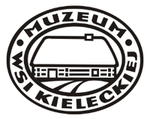

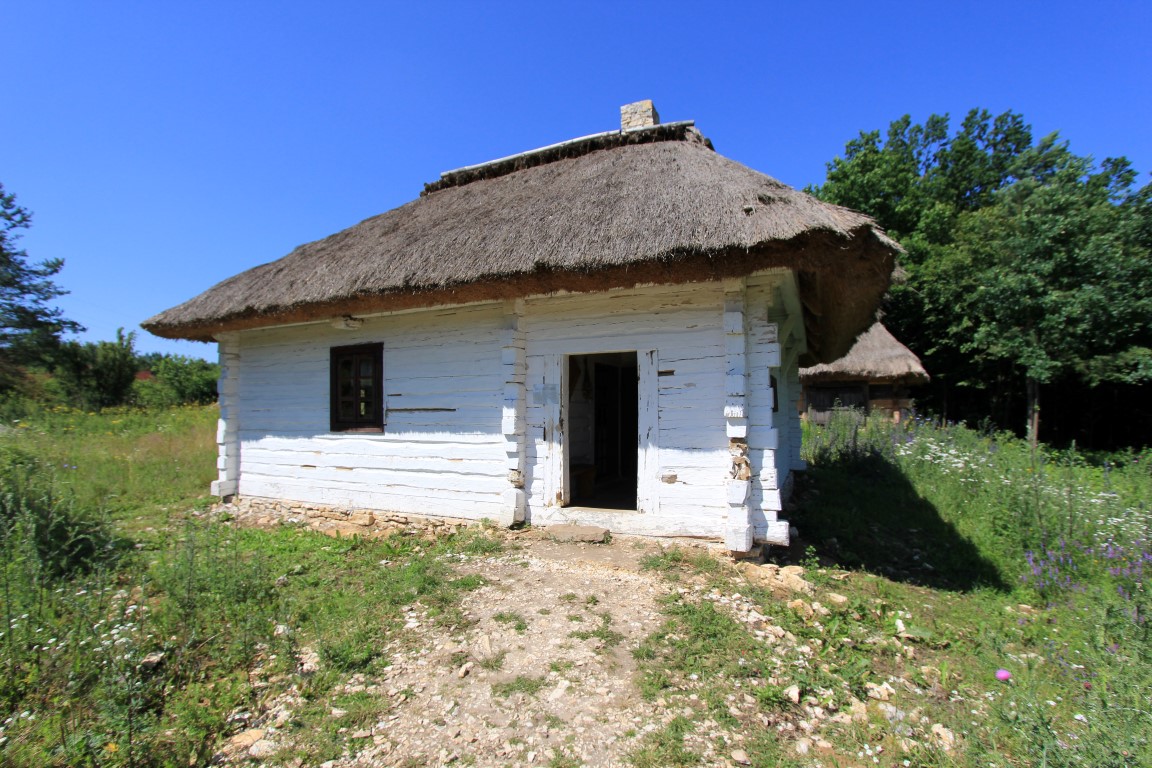
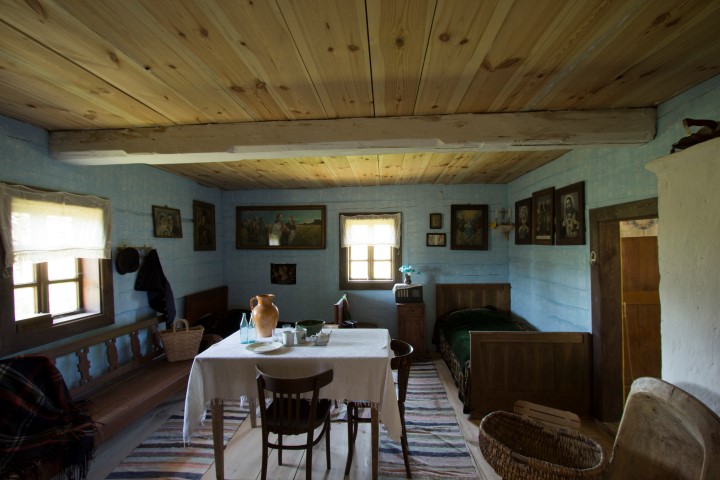
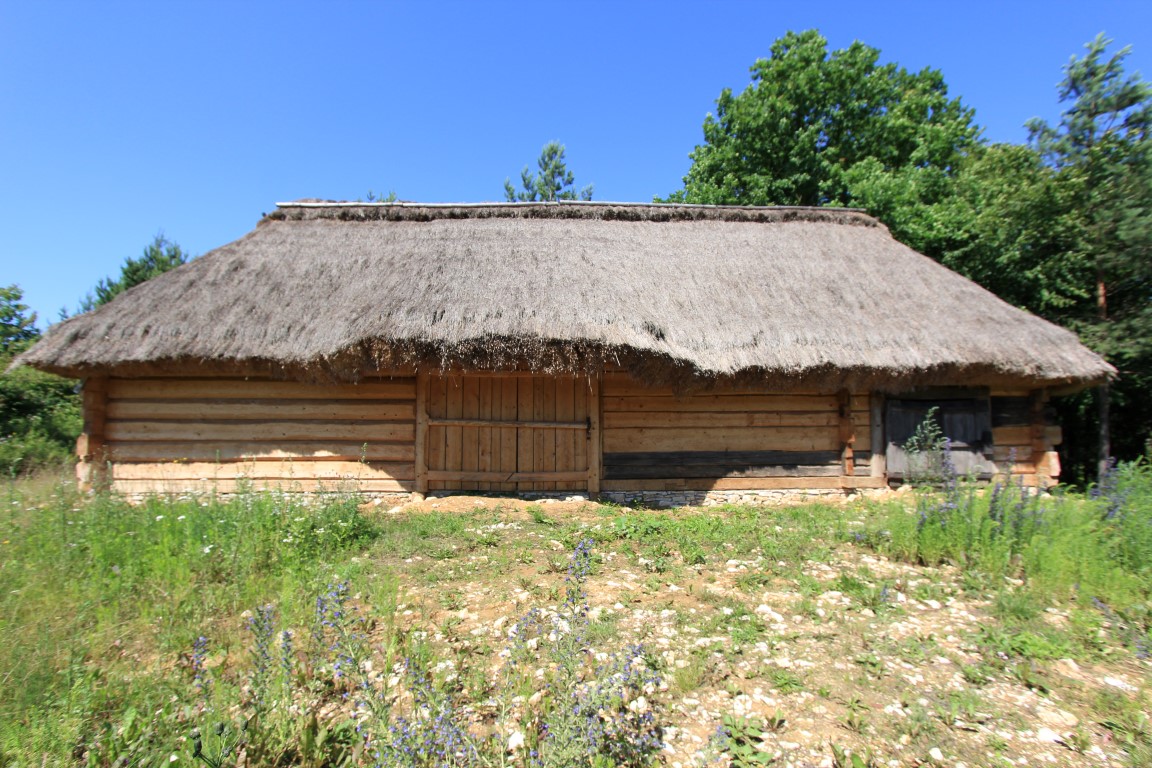
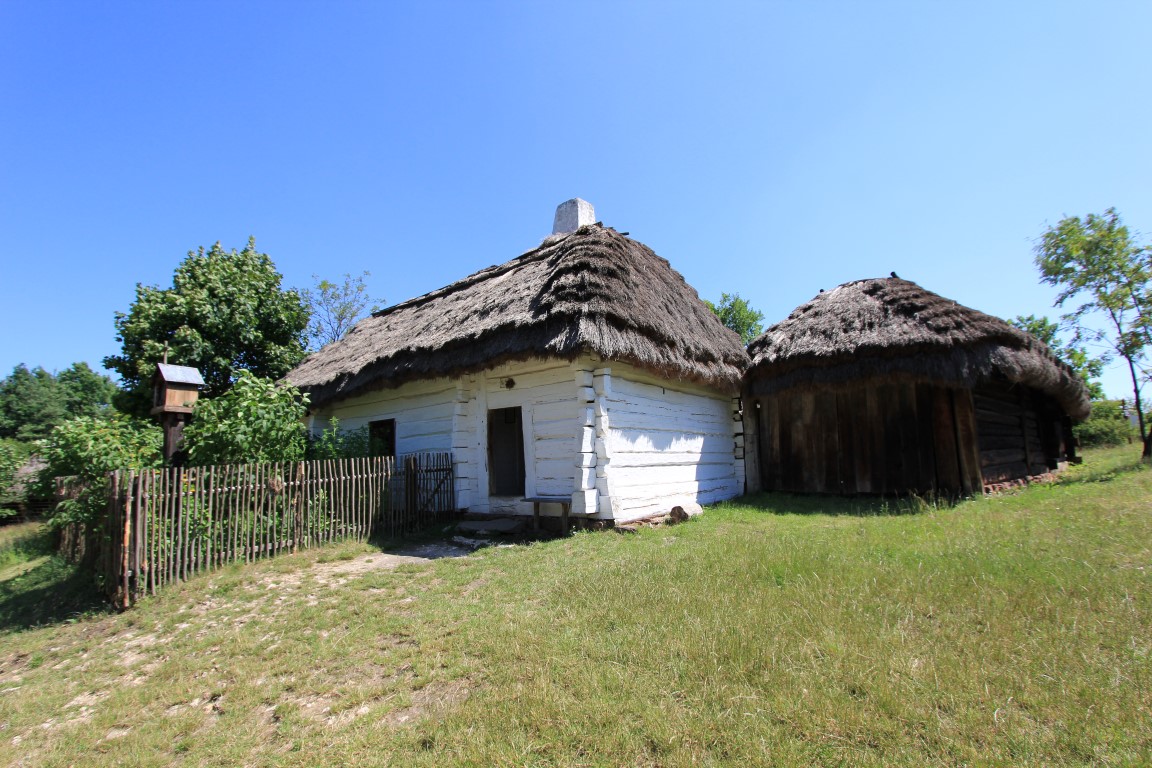
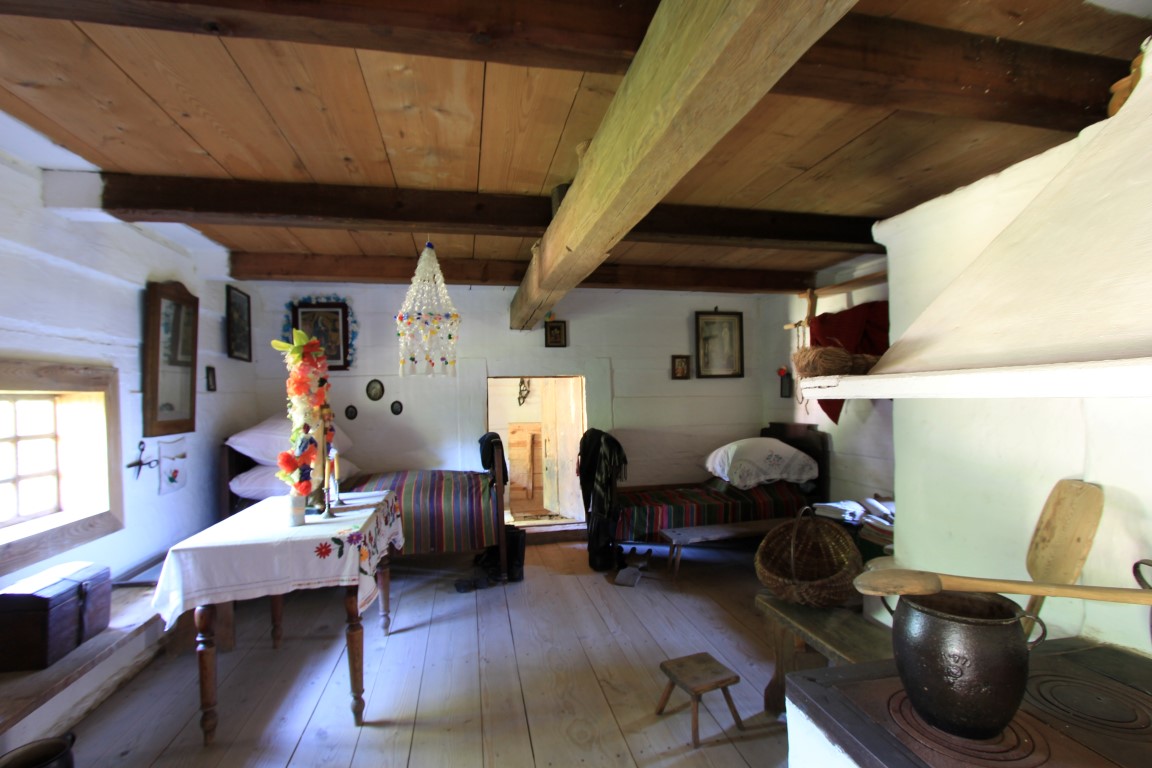
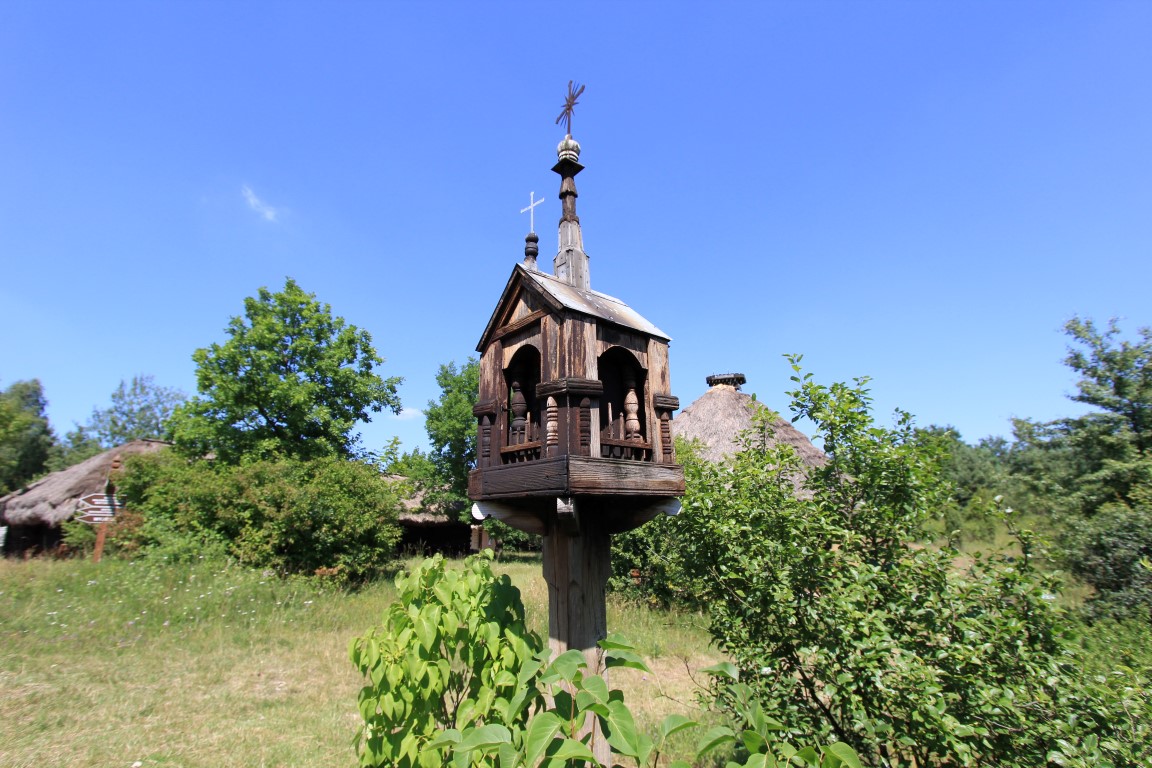
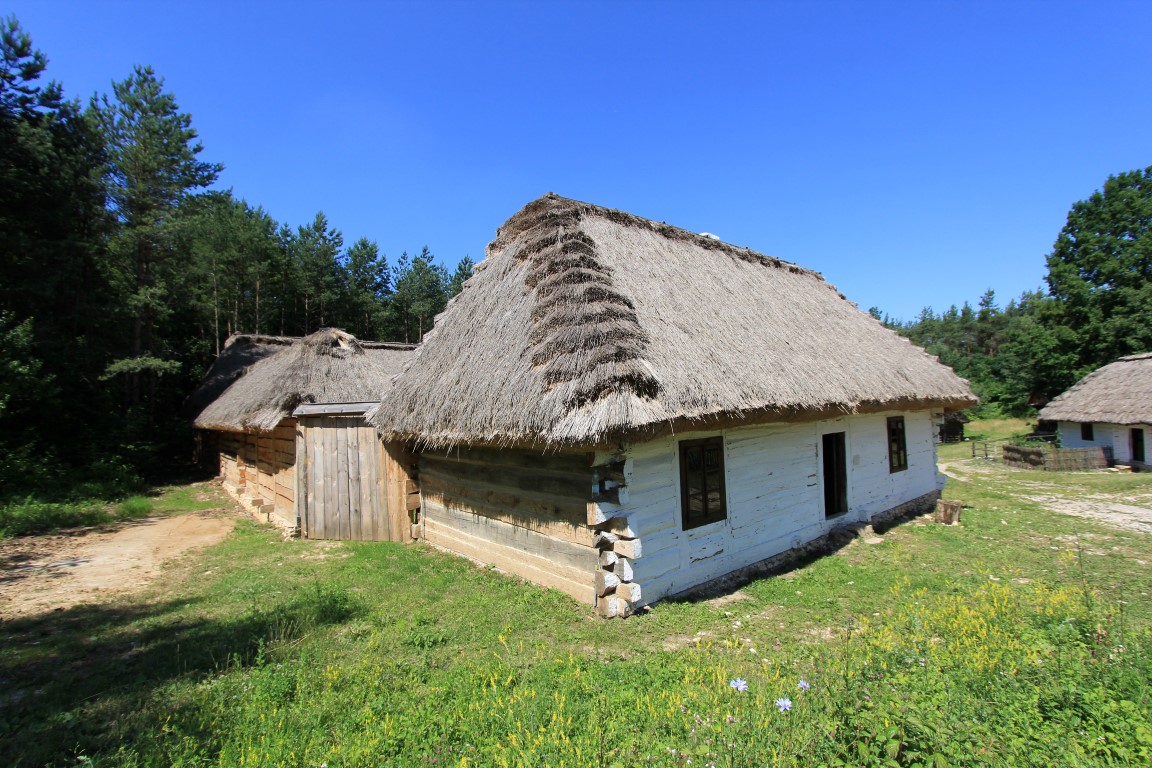
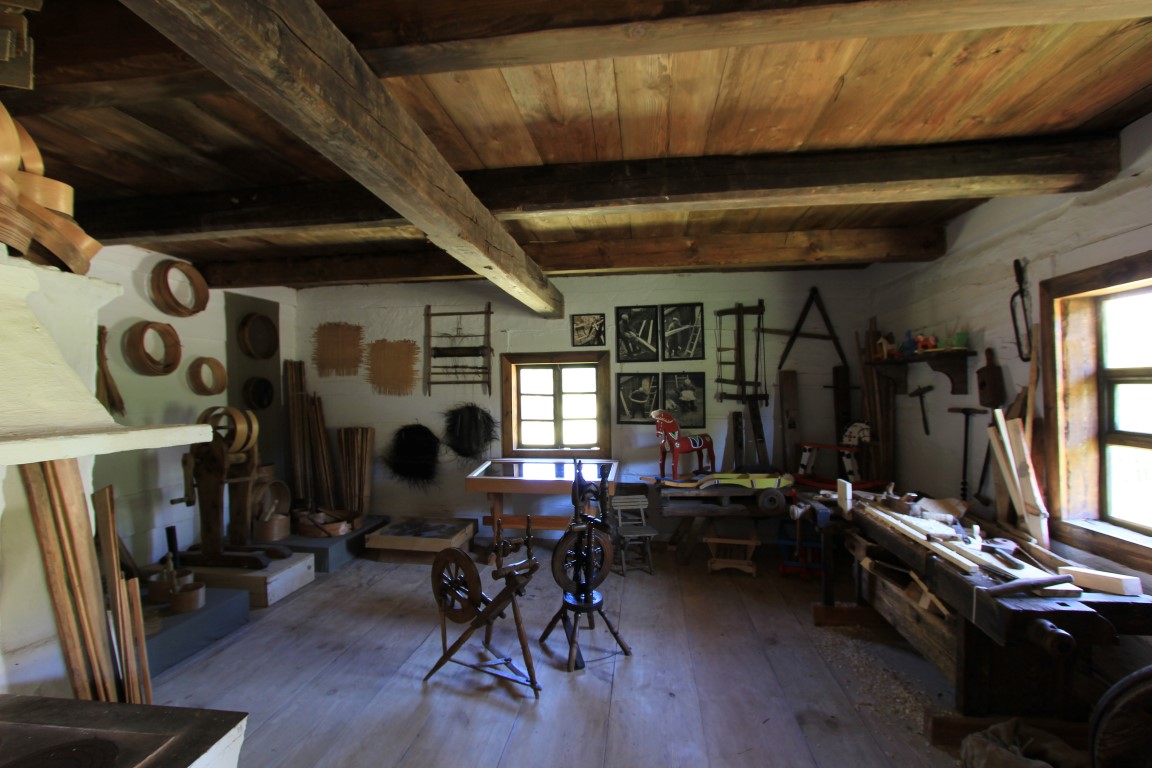
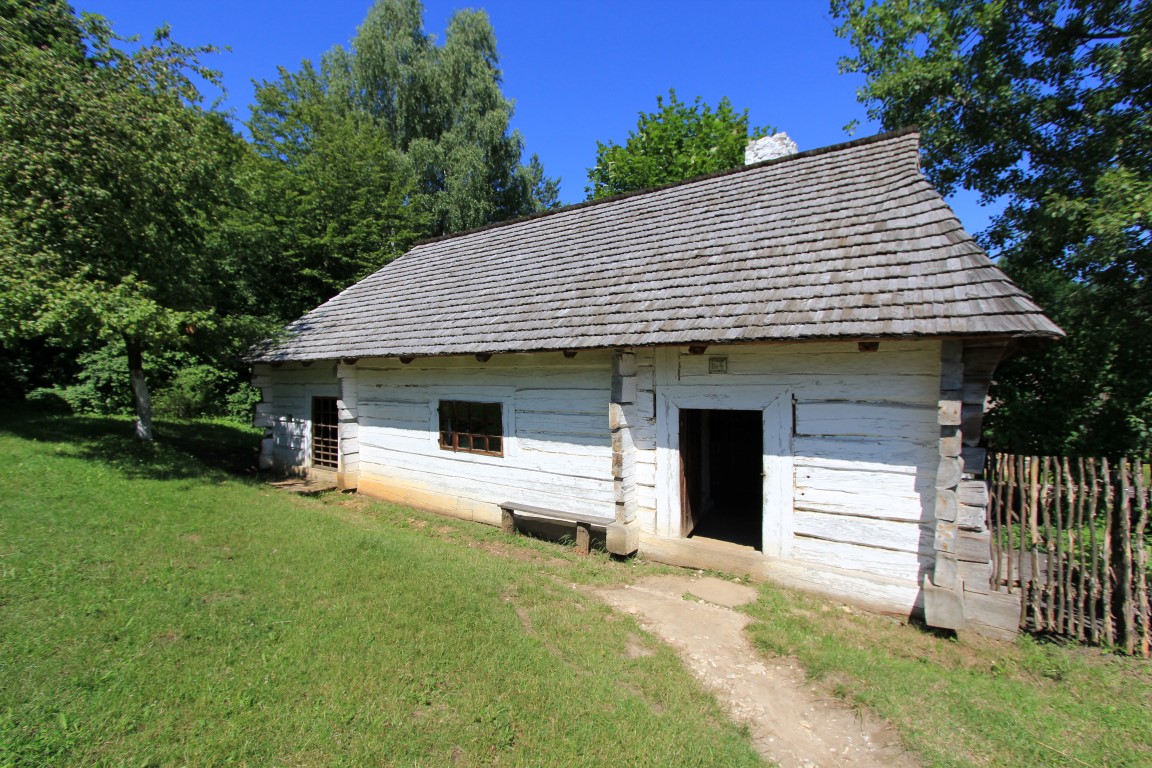
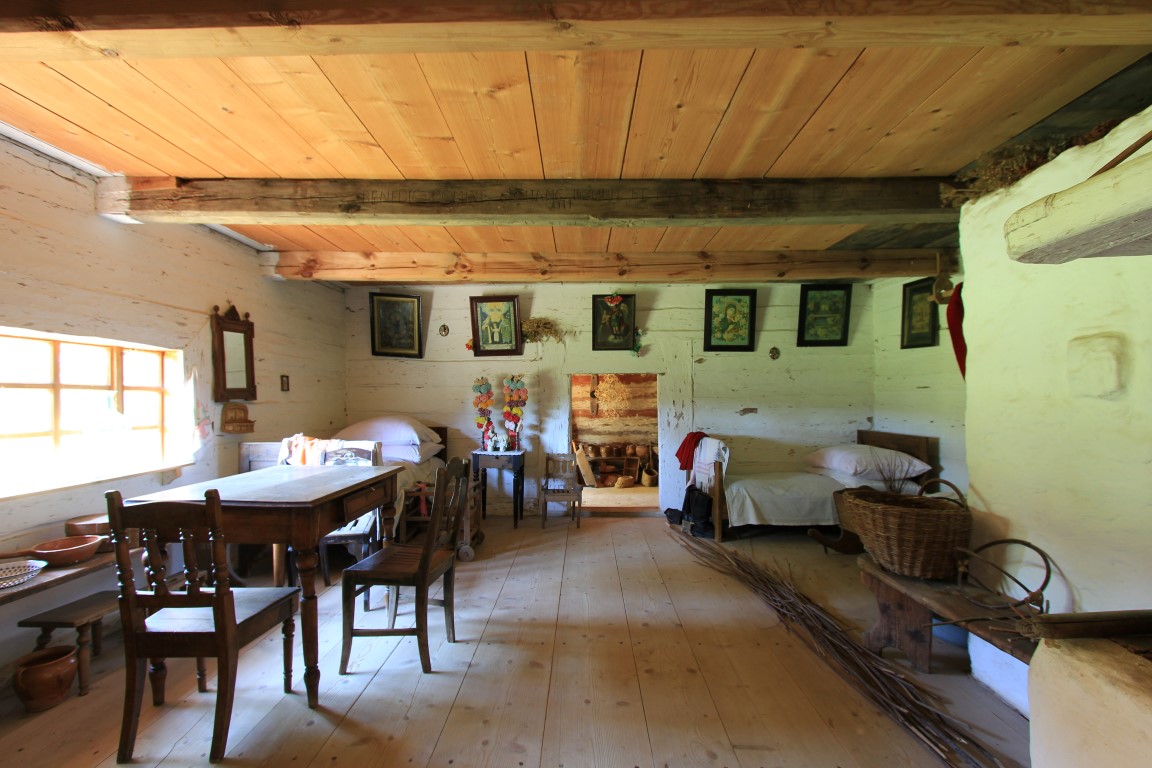
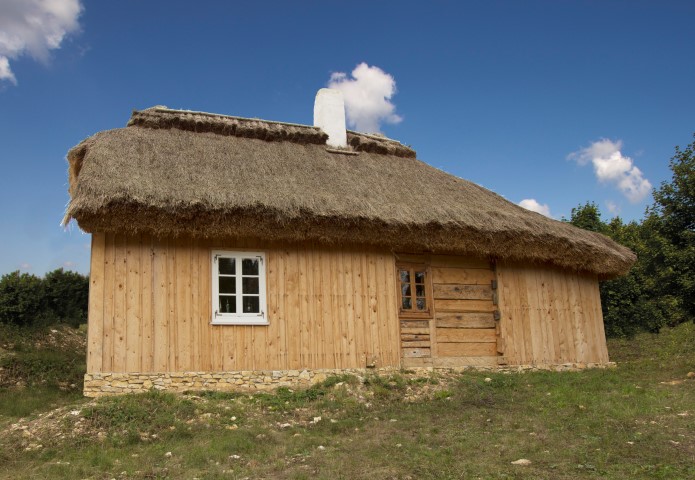

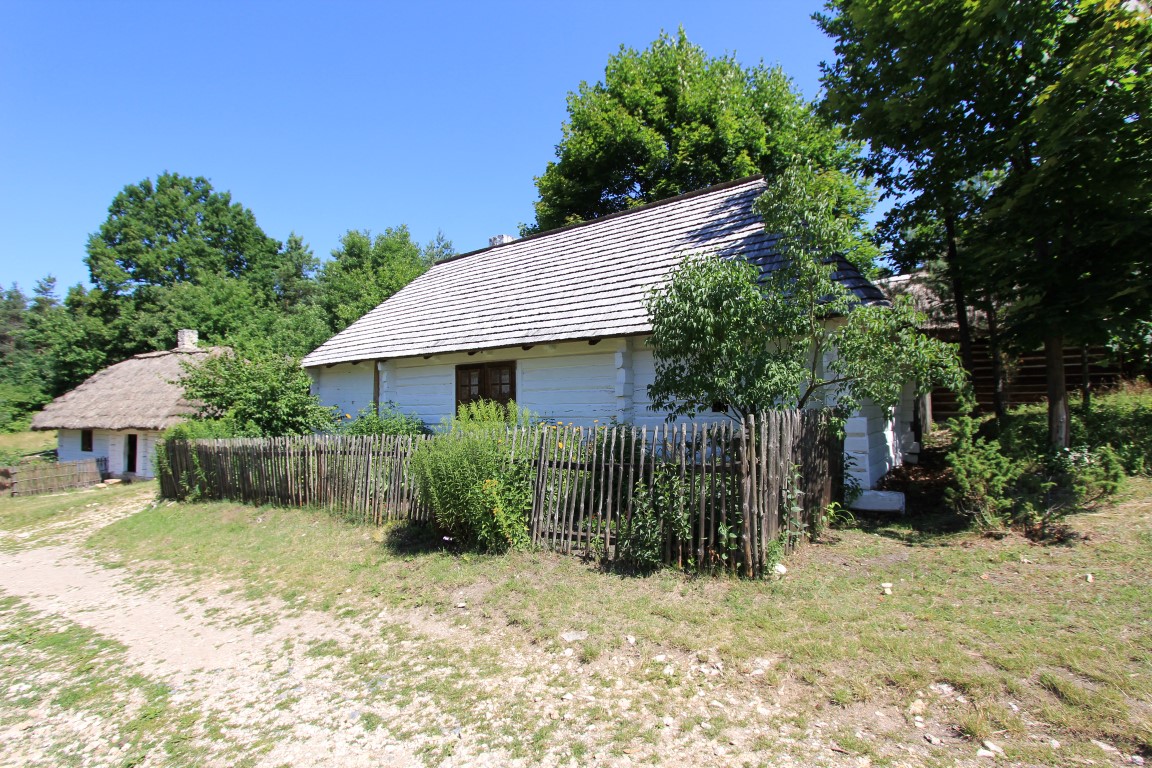
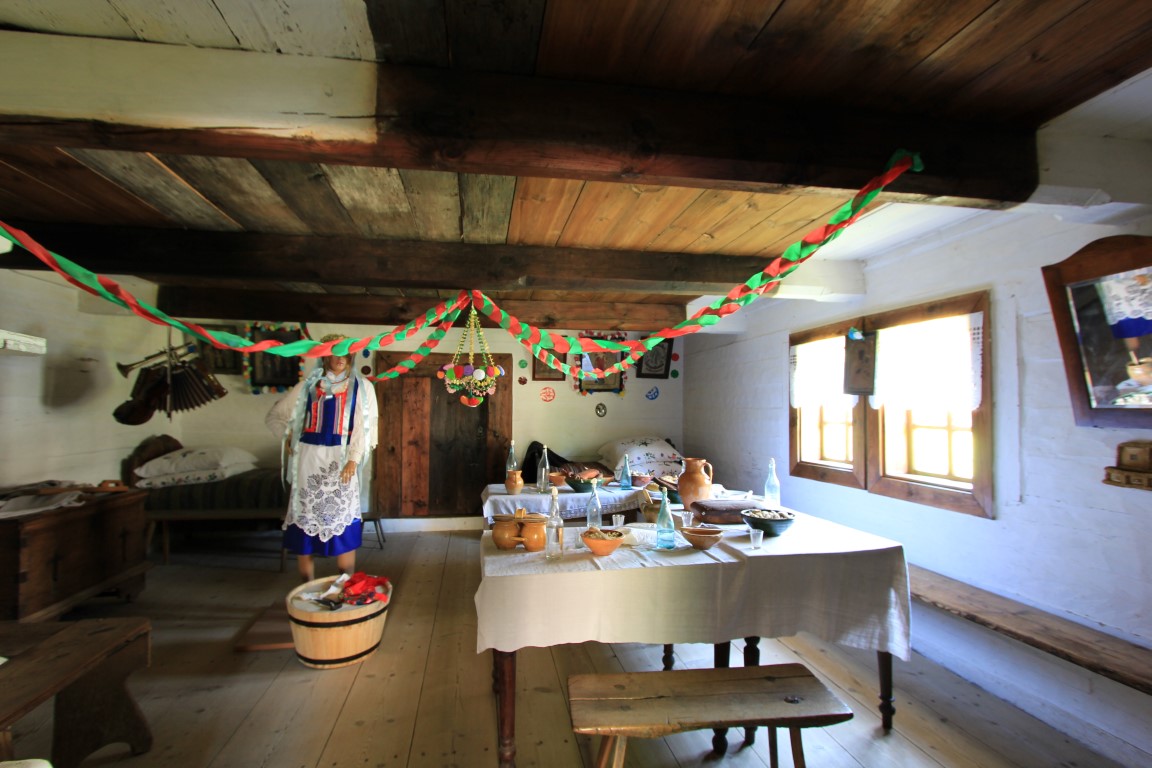
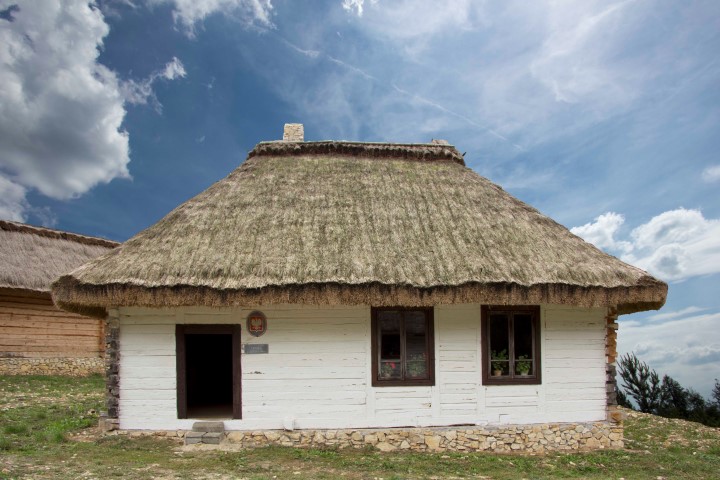
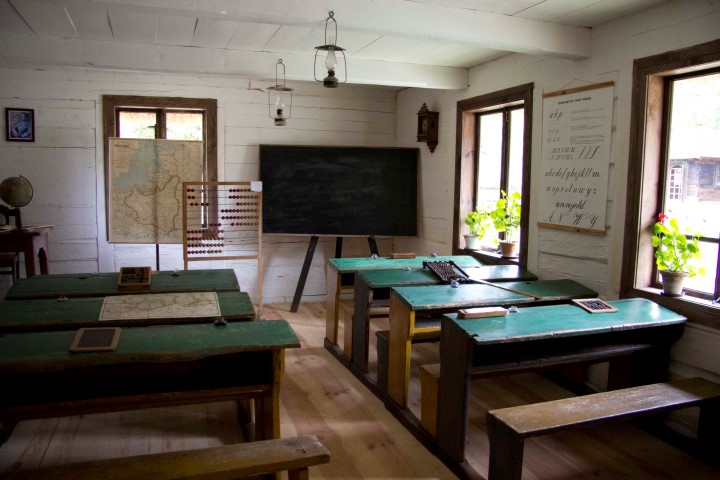
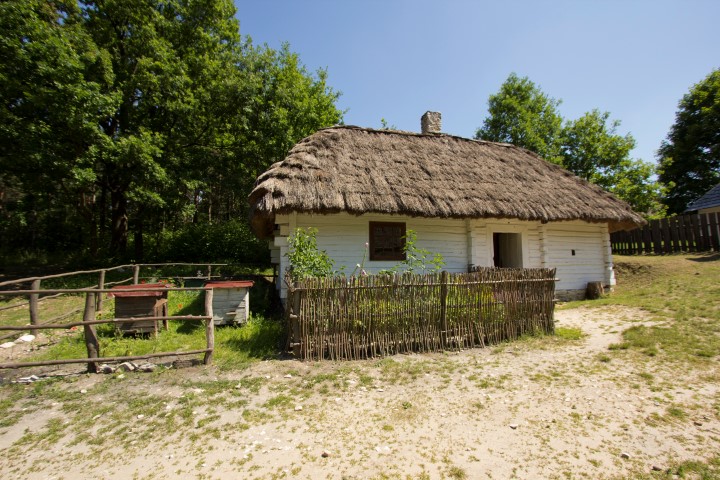
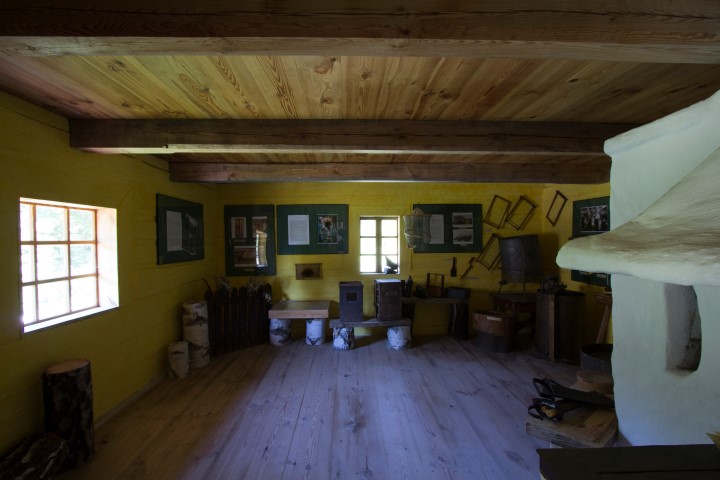
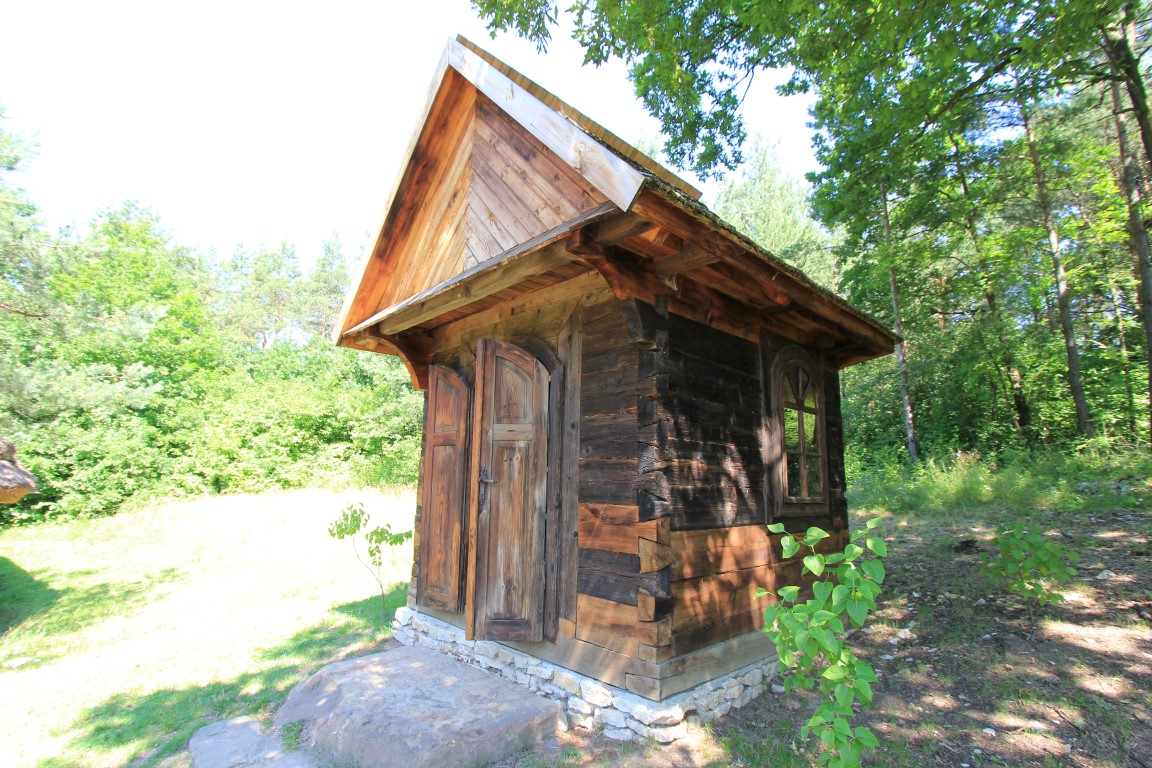
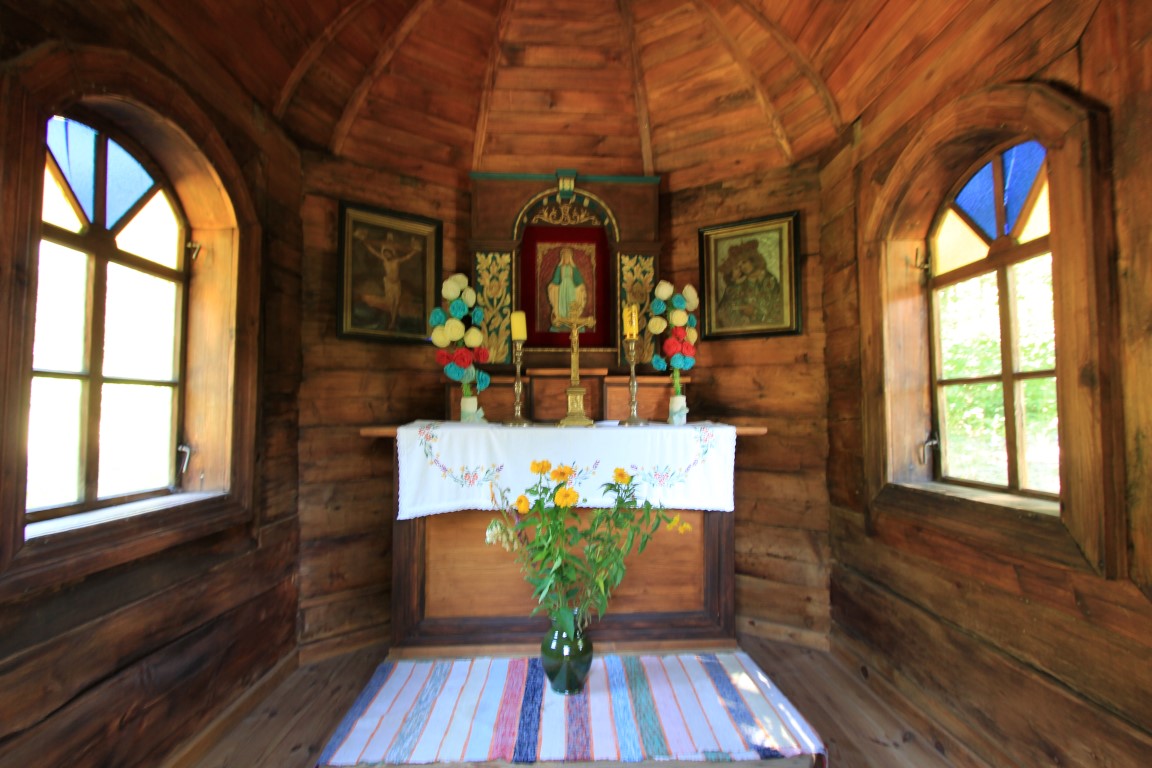
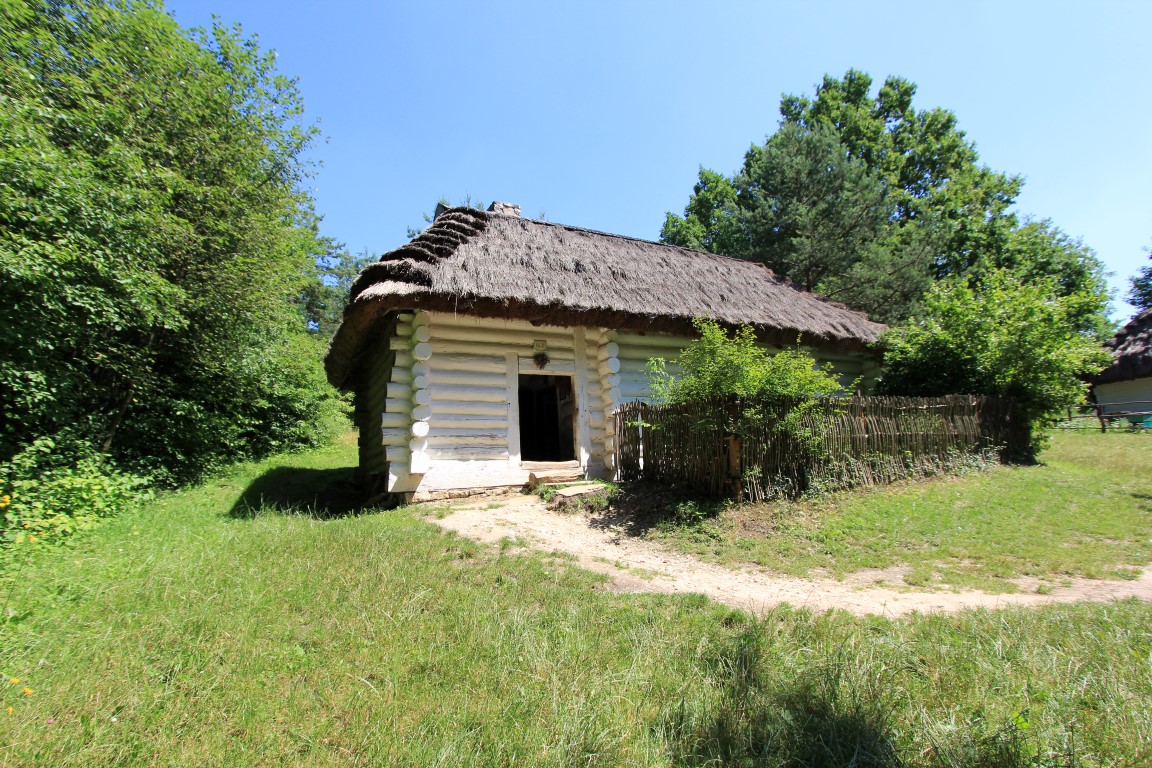
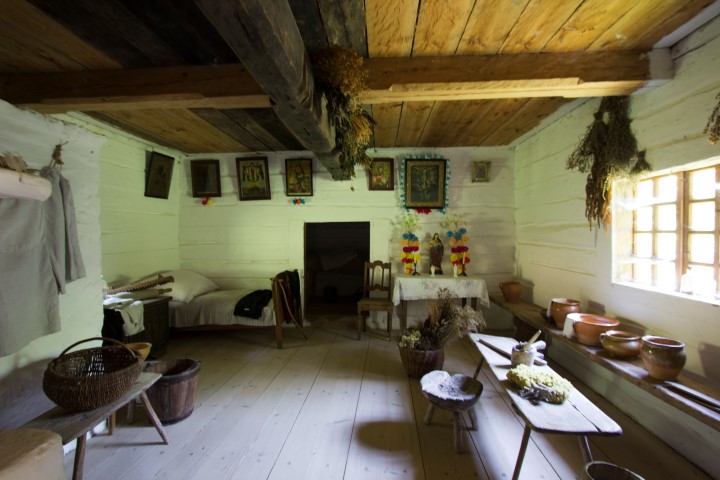

 Zakup współfinansowany ze środków Unii Europejskiej w ramach Europejskiego Funduszu Rozwoju Regionalnego na lata 2014 – 2020
Zakup współfinansowany ze środków Unii Europejskiej w ramach Europejskiego Funduszu Rozwoju Regionalnego na lata 2014 – 2020